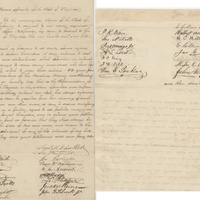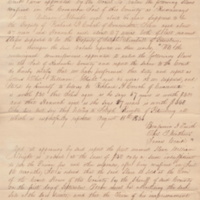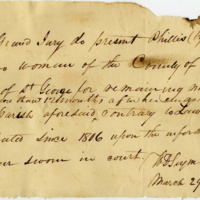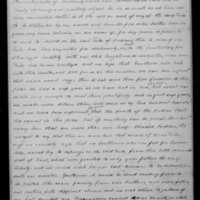Expansion and Reform
1800-1860

Economic development, while increasing wealth and prosperity, also brought regional differences more sharply into focus. Northeastern industrial development, increased urbanization, and technological advancements separated it even further from the agrarian South. There was also a transportation revolution involving railroads, canals, and trans-regional roads, many times centered in the North. The issue of slavery caused increasing strife and political debate as new western territories sought to join the Union. Despite expansion, free African Americans and women were still largely disfranchised. Reforms movements related to temperence, women's rights, education, mental health, and imprisonment occurred in bursts, setting the stage for post-Civil War major reforms.
Learn more in the National U.S. History Content Standards.
Recently added items
Madison Mining and Trading Company, Petition, 1849
In 1848, Spain ceded a vast western territory to the United States as part of the Treaty of Hidalgo that ended the Mexican-American War. This included California, home to about 6,500 Californios of Mexican descent, 700 Americans, and 150,000…
William Albright, Runaway Slave Record, Kanawha County, 1834
Virginia's economy was based on slavery until the Civil War and emancipation. In 1860, Virginia was home to 500,000 enslaved people, more than any other state. Although most Virginians were not enslavers, farmers and planters used enslaved laborers…
Phillis, Commonwealth Cause, Accomack County, 1824
Commonwealth causes are criminal cases filed by a county's prosecuting attorney (commonwealth's attorney) against individuals who violate Virginia law. Prior to the abolition of slavery in Virginia in 1865, criminal offenders and victims included…
Pamunkey Indian Tribe, Counter Petition, 1843
After a public notice appeared in a Richmond newspaper in October 1842 that a petition would be presented to the Virginia General Assembly to sell King William County property known as "Indian town lands," members of the Pamunkey tribe took action.…




